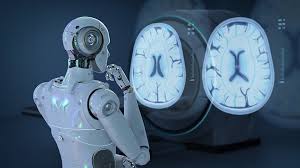Source: simplilearn.com
Many people fear that the rise of Artificial Intelligence (AI) in any industry is going to eliminate their jobs. In healthcare, for instance, AI is already making a big splash in radiology. That’s deterring many students in medical school from pursuing a career in the field. But rather than eliminating the job of a radiologist, AI is transforming what the role is. Not only that, and perhaps most importantly, AI has the potential to enable better patient care and lower costs in the end.
A (Busy) Day in the Life of a Radiologist
Since the first X-ray was taken in 1895, a lot has changed. The field of radiology now also involves ultrasounds, mammograms, CT scans, and magnetic resonance imaging (MRI). Radiologists, however, do a lot more than performing these diagnostic procedures. They are also responsible for reviewing patient histories from multiple sources, images and data gathered from diagnostic procedures, preparing exhaustive reports, and communicating results to patients and physicians.
In short, they are busy people. As more digital technologies and data are injected into the mix, it only increases their workloads. With all these responsibilities, it shouldn’t be a surprise that the Mayo Clinic found that radiologists have only three to four seconds to review MRI and CT images. Considering that, using AI to perform tedious tasks quickly and accurately is extremely beneficial to radiologists. While the AI of today doesn’t multitask well, it does specific tasks exceptionally well, freeing up radiologists to focus on providing better patient care.
Using ML to Analyze Images Faster
Medical image registration is a core technique used in radiology – and, AI is a perfect tool to do it. At a very high level, it means laying one image over another to find differences. Take MRIs, for instance. Each one consists of hundreds of 2D images stacked together to form a large 3D image. In the process, algorithms work to match pixels between the images and find anomalies, like a tumor or bone break. It’s a tedious process that can take hours with technology that isn’t trainable. For acute events, like a heart attack or stroke, this could mean life or death. To speed up the process, researchers at MIT developed a Machine Learning (ML) algorithm that can register medical images 1,000 faster than humans, or in one to two minutes. If a high-powered graphics processing unit (GPU) is utilized, images can register in less than a second.
Contextualizing Healthcare with Data Science
Data generated from medical imaging accounts for 90 percent of all healthcare data combined. Not only are the images becoming more complicated, but they are taken more in-depth in the human body – in some cases, down to the cellular level. With smart algorithms, radiologists can contextualize that data by cross-referencing it with other relevant data sets to optimize diagnostics and treatment plans. For example, clinicians can consider personal health information (PHI) gathered from wearable devices and genetics when creating a treatment plan for cancer. The PHI from a smartwatch could let physicians know how the patient is responding to treatment. If the clinicians and radiologists have access to a shared genomic database, they could better predict how certain genetic makeups have responded to treatments to different types of cancer in the past.
Radiologists: The New Data Scientists in Healthcare
AI and deep learning can assist radiologists, clinicians, and pathologists to identify and diagnose conditions with more accuracy and closer to the point of care. That’s why the question shouldn’t will AI takes the place of radiologists, but how radiologists can use data science to improve diagnostics and overall patient care.
To learn how to harness Artificial Intelligence in the rapidly changing field of radiology, check out Simplilearn’s Data Science And Artificial Intelligence Dual Master’s Program, co-developed with IBM, covers the most in-demand tools and techniques through a blend of self-paced learning, instructor-led virtual classrooms, and hands-on industry projects.
